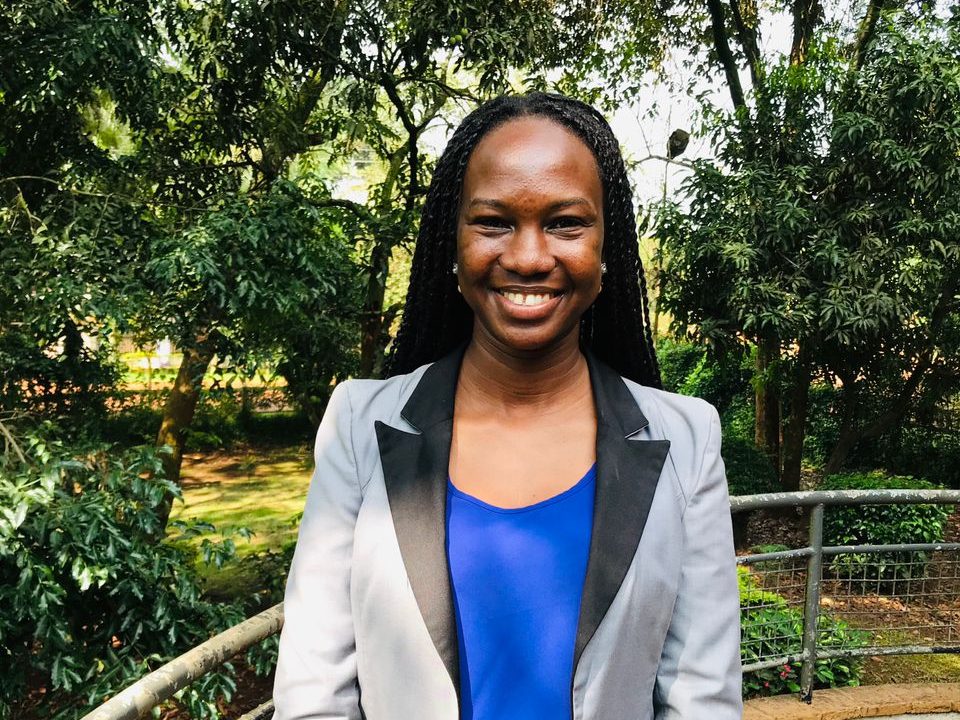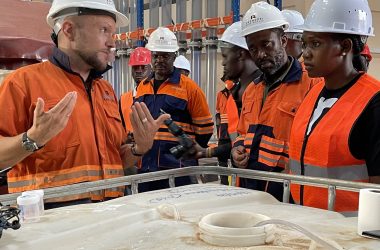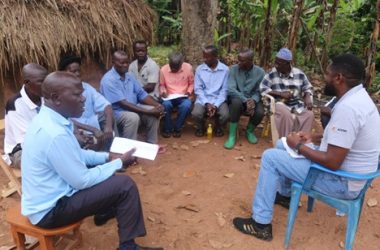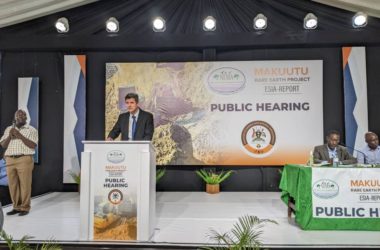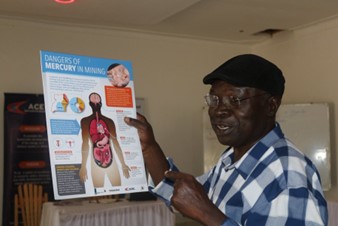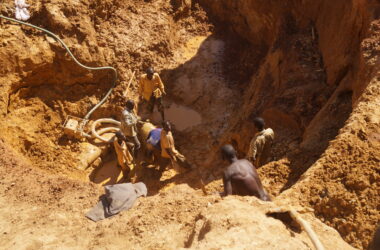The first of its kind in Uganda, Rwenzori Rare Metals is developing an Ionic Adsorption Clay (IAC) deposit of Rare Earth Elements located in the districts of Bugweri, Mayuge and Bugiri under a project dubbed the Makuutu Rare Earth Project. The clay deposit stretches approximately 40km from Mayuge through Bugweri to Bugiri districts and most recently in Iganga. Deborah Namirimu, Rwenzori Rare Metals’ Stakeholder Engagement and Communications Specialist, talks to Plexii about this journey.
What would you say is the mood among the communities regarding the Makuutu project?
Our stakeholders are highly expectant over the project and development prospects associated with such a project. Such projects often come with such expectations, and Makuutu Rare Earth Project is no exception. Communities see opportunities for betterment of livelihoods and probably a lot of cash and unrealistic compensation packages. While some of these expectations may be unrealistic, our company is dedicated to maintaining ongoing and meaningful engagement with all its stakeholders to ensure a level playing field.
As you are aware there was and still remains cases of discontentment about compensation for some works on people’s land. Can you clarify on the processes?
The cases you highlighted from Nakalama Sub-county in Iganga and Iwemba Sub-county in Bugiri cannot account for our activities, as these two areas fall outside our designated project area. Please check with them which project they were referring to.
During exploration, we pay the landowner for accessing their land and drill an exploration hole. In the process, we try as much as possible to avoid crop disturbance and drill within a radius of five metres from the designated target point. For any crops that might be damaged during the exercise, we negotiate with the farmers, make payment, and provide a payment voucher as a record. This is a transparent process which involves the landowner, the LC 3 and LC 1 chairpersons as all drilling work is done in their presence. Also, note that a landowner has the right to refuse access for drilling and we do have such cases. When that happens, our geologists identify alternative spots for drilling. Once drilling is complete the drill holes are immediately rehabilitated, and the landowner uses their land. The District Environment Officer and NEMA monitor the rehabilitation.
Regarding land acquisition, the only land acquisition we have done so far is 20 acres for the demonstration plant in Makandwa Sub-County, Bugweri District and this land was mostly farmland. The process followed the appropriate procedure according to Uganda’s legal provisions which involved the Chief Government Valuer, the District Local Government and affected landowners.
So just to be clear, no land acquisition has been done and there hasn’t been compensation apart from the one for the demo plant?
Exactly!
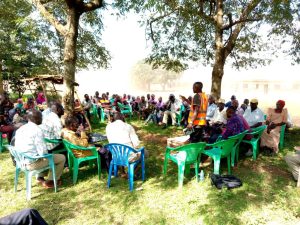 Do you have like a grievance mechanism to address these issues?
Do you have like a grievance mechanism to address these issues?
Yes. We have established a grievance mechanism at three levels: the district, the sub-county, and the village level. At the village level, there is a committee consisting of nine members who were selected by the community to take on this responsibility. Eight of the members represent various groups: the elderly, women, men, the youth, and persons with disabilities (PWDs), male and female Project Affected Persons (PAP) representative from the project area, and a representative for vulnerable persons. Additionally, the LC 1 chairman, is the ninth member of the committee and serves as the only permanent member by virtue of his leadership position.
Each committee meeting is facilitated by a Community Liaison Officer (CLO) who documents the discussions and resolutions. We maintain a record of the proceedings to track how issues have been addressed. If a grievance is unresolved following efforts of the village committee, it is forwarded to the sub-county village grievance committee for further management. Should it still remain unresolved, it is then taken up to the district grievance management committee, where additional guidance is availed. We also maintain a grievance tracking database and a grievance logbook where the CLOs record issues raised.
While the grievance committees should be dealing with Company related grievances, they have currently been engaged with issues beyond the company’s control, such as family land ownership disputes and land wrangles. While we cannot directly resolve some of these matters, we aim to facilitate sessions that promote resolution.
At the Company level, grievance issues we deal with involve correcting a misspelled name of a PAP or resolving size of acreage surveyed. For instance, if a PAP claims to have ten acres but our surveyor indicates it is only seven acres, this may necessitate a resurvey. However, these grievances typically arise later in the land acquisition process. At this stage, individuals can continue to buy, sell, or manage their land as they wish.
Ultimately, the grievance mechanism assists us in addressing issues outside of the company’s control while we facilitate discussions to reach conclusive outcomes.
Getting back to your earlier explanation; are there instances where you will drill more than one hole in someone’s land?
It is possible if the PAP has a huge land parcel. This depends on the exploration phase being conducted, as we have different space-drilling phases. We have spacings of 800 metres, 400 metres, 200 metres, and 100 metres. For instance, if we are working at a 100 metre spacing and the next 100 metres is on your property, then it is indeed very feasible. And as I indicated before, the landowner has the right to refuse entry for drilling, as drilling is by consent of the landowner. Each drilling point is paid for entry and any crops disturbed.
That is quite clear. So, getting back to our previous discussion, you do have CLOs on ground?
Yes, we have Community Liaison Officers (CLOs), these are children of the soil and have done a tremendous job. They are well-acquainted with the local language and the community. The community recognizes and relates well and freely with them. We also ensure that they take the lead in sensitization efforts because the messaging is crucial and needs to be communicated in a digestible manner.
Additionally, we conduct talk shows to reach our audience far and wide. We have four talk shows each week on different stations: Eastern Voice in Bugiri every Monday, Busoga One in Jinja every Tuesday, Apex FM in Iganga on Wednesday and Mayuge FM in Mayuge every Friday. These shows have helped to enhance our sensitization efforts.
Would you be able to estimate how many PAPs you are dealing with?
We operate in four districts where we have PAPs. While I can’t provide an exact number, we are at various stages of the project in each district. In Iganga, we have just begun exploration, whereas in parts of Bugweri, Mayuge and Bugiri, we are at a more advanced stage.
How many PAPs were affected by the 20-acre acquisition?
They were about 23 PAPs, and the area was farmland, so we did not have to demolish any permanent resident structures. It mainly consisted of food crops and sugarcane.
Busoga has had its developmental challenges and this has probably been complicated by unscrupulous speculators from the city coming into these communities. So, what are those unique challenges you might be facing in regard to dealing with the communities?
First of all, let me start by saying we would not have survived for more than 10 years in Busoga if it was not for the support of the communities and their leadership. They have embraced us and we are learning how to co-exist and manage each other’s expectations through win-win relationships.
Initially, it was somewhat challenging because the sensitization efforts were probably not aggressive enough. However, we maintained a presence in the communities and mapped out the stakeholders, ensuring that we engaged everyone affected by the project—political stakeholders, community leaders, district technical personnel, NGOs, the media and the PAPs themselves.
In the beginning, we were primarily sensitizing the community, the local and district leadership, yet there are many stakeholders who are affected/ and influence the project overall. The most crucial lesson we learned was the importance of stakeholder inclusion in project activities, and continuous sensitization to fill the information gaps.
We have come a long way. Initially, we faced challenges due to gaps in information. Rare earth elements are relatively new in Uganda, and discussing technical concepts can be difficult for a Project-Affected Person to grasp, unlike gold, which more people clearly understood.
One critical lesson we’ve learned from our mistakes is to ensure that these information gaps are addressed. We welcome feedback in engagement sessions which might indicate that not all gaps are filled appropriately. For example, if someone is unaware of their rights related to land, opportunists may exploit their lack of information, leading to changes in attitudes and resistance against the project. Therefore, while sensitizing the community, it is also vital to enhance or enlighten stakeholders with the necessary knowledge.
Communities are very dynamic in nature, and because of this, we’ve also learnt to have communication that is consistent and aligns with actions undertaken on the ground.
How supportive has the local leadership been?
Ooh! They have done us well! However, our line of communication and as part of our inclusive approach, we start at the Ministry of Energy and Mineral Development (MEMD) level. We write to the Ministry on intended activities to which they write to the district introducing the activity and purpose to solicit for their support. The district introduces us to the sub county and village leadership on the same.
When the leadership understands what you are going to do on ground, the community will be receptive. The local leadership has helped us mobilise PAPs and made them understand the time frames of our activities. We also inform the local Members of Parliament, as we have learned that when PAPs don’t understand certain activities they always refer to their MPs for clarification. We keep all these stakeholders informed and they have all been very supportive. Rwenzori Rare Metals is where it is today due to their support.
The community listens more to the local leadership because they can hold them accountable at the end of the day. It is our duty to ensure we fill any information gaps with the local leadership so they communicate clearly. Because of them, we have a smooth process running. The area MPs, the political wing have been supportive. A PAP will call their MP and inquire if they are aware we are doing something. Imagine if you have not filled the communication lines.
So, to get you clearly community sensitization at first had its challenges but you have overtime sorted this?
Sensitization was okay, however reinforcing it is what was required but mostly stakeholder inclusion. You reinforce it with various strategies like talk shows, one-on-one, door-to-door engagements. You beef it up so the message goes deep because for example, you will call a meeting, the men will come while the women will stay behind cooking. That means if you do not fill that gap with a door-to-door sensitisation, the women will never know. You might have all the strategies but also must be willing to unlearn that while this meeting is going to be beneficial to the men, what are you going to do for the women, youth who stay back in the trading centres? So if it is to do focus group discussions to talk about the activity, so be it.
The same with higher level leadership, you may do all you need at District level and get the okay, but when you start, the PAP informs the MP and the MP may raise awareness issues. So we have learned to be inclusive with all related stakeholders regardless of the activities.
Are PAPs already benefiting from CSR projects?
At this point where the project is at, we are still doing feasibility studies so some of these things that you might want to see will come at the commercial stage. I will start by saying, for a typical exploration and a pre-mine development project, we have done very well in comparison to our peers in other parts of the world.
Generally, CSR budgets are tied in with mining revenues. However, in our case, we understand the importance of supporting communities and reinforcing what we stand for as a company. We have made modest contributions such as repairing community boreholes, providing equipment to health facilities, providing schools with scholastic materials, supporting local football teams, distributing fruit tree seedlings, and giving back during the festive season. We have also supported churches with modest means and we condone with bereaved families especially if we are working in that particular village. The community is part of us and we are part of them.
We have recently just participated in a health camp in Bugiri organized by the Bugiri District Local Government. We have conducted another one in Bugweri testing for HIV/AIDS, Hepatitis B and Syphilis. This is part of our social safeguards towards our host communities.
Are there still cases of misinformation and how are you managing these?
When you deal with people, they will always be misinformation, it is important for the company to keep doing things as per legal requirements and international standards. People call into our radio talk shows and we also have a toll-free line. Our grass root engagement has given them the confidence so they can easily call in or even reach the CLOs to get facts about something. Even when there is misinformation, it is being managed. So, I think we have moved a long way. I cannot say there are no challenges, they will still come through but now it is in a more controlled space and the people have somewhere to run to for accurate information.

